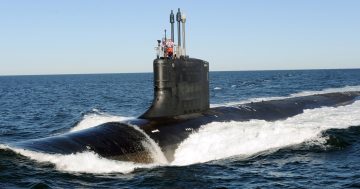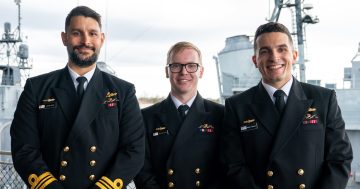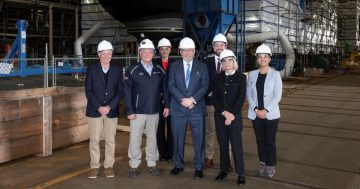
A US Navy Virginia Class nuclear-powered attack submarine. Photo: US Navy.
A report prepared for Congress on the US Navy’s Virginia Class nuclear-powered attack submarine (SSN) procurement program has highlighted what issues need to be considered and overcome to allow the transfer of US submarines to Australia.
Under Pillar 1 of the AUKUS construct with the US and UK which was announced by the leaders of all three countries in March, Australia is slated to receive between three and five Virginia class nuclear-powered submarines to begin replacing its own Collins Class conventional submarines from 2032.
After this, Australia plans to switch submarine classes and acquire eight SSN-AUKUS submarines under a cooperative program with the UK from 2041.
Along with the UK’s Astute and the US’s Seawolf boats, the Virginia Class SSN is considered one of the most capable submarines in service. More than 30 Virginia boats have been built since 1998, and the class has been continually improved with ongoing ‘Block’ upgrades and enhancements to the design throughout its build run. Each vessel of the class has a projected 33-year service life.
The report by the Congressional Research Service published on 19 May was designed to provide background information to members of Congress on the Virginia Class so that they may be better informed when making budgetary and programmatic decisions about the initiative as a whole.
The report says a legislative package from the US Department of Defense outlining the AUKUS arrangement was sent to Congress on 2 May. It included the requested authorisation for transferring one or two Virginia Class SSNs to Australia.
It says Congress needs to consider several factors relating to the legislation, including whether the legislation needs to be considered under the 2024 National Defense Authorization Act (NDAA) or can be deferred, whether the authorisation should be provided for just the first two boats or can be expanded to up-to five SSNs, and when the SSNs would be removed from US Navy service to prepare for the transfer.
While this seems to confirm Australia will receive former US Navy SSNs instead of new-build boats, the report also asks Congress to consider whether that would be the case, whether new-build boats could be made available, or a combination of the two.
It says Congress should also decide, apart from the cost of the submarines, how much of a “proportionate financial investment” Australia will be required to make into US shipyards to expand the US’s submarine industrial base. Despite a plan for two Virginia boats to have been built per year since 2011, this has not been achieved due to ongoing workforce and materials issues, made worse in recent times by the COVID-19 pandemic.
The report asks Congress to consider “the ability of the US submarine construction base in the 2030s to build for the US Navy, as replacements for the (Australian) Virginia Class boats, SSNs that would be in addition to those already envisaged for procurement for US Navy use prior to the announcement of the AUKUS agreement”.
The ability of the US shipyards to ramp up sufficiently to cover the sale of Australian boats appears to be somewhat questionable. It says that “the challenge for the industrial base … is to ramp up production from one ‘regular’ Virginia Class boat’s work per year (prior to 2011), to the equivalent of about five … boats’ work per year”. The larger number takes into account not just the Virginia boats, but also the US Navy’s new Columbia Class ballistic missile submarine (SSBN) program.
The report further asks Congress to consider what will be “the net impact on collective allied deterrence and warfighting capabilities of transferring Virginia Class boats to Australia while pursuing the construction of replacement SSNs for the US Navy”.
It points out that supporters of transferring SSNs to Australia rather than keeping them in US Navy service might argue that “the deterrent value of introducing SSNs to Australia’s navy would be greater than the deterrent value of keeping those SSNs in US Navy service because a newly created force of Australian SSNs would present China with a second allied decision-making centre for SSN operations in the Indo-Pacific, which would complicate Chinese military planning”.
Conversely, it says opponents of the proposed transfer might argue that “it could weaken deterrence if China were to find a reason to believe, correctly or not, that Australia might use [its] Virginia-class boats less effectively than the US Navy would have, or that Australia might not involve its military … in a US-China crises or conflicts that Australia viewed as not engaging important Australian interests”.
As if to support this viewpoint, it points out that “Australian Defence Minister Richard Marles in March 2023 reportedly confirmed that, in exchange for the Virginia-class boats, Australia’s government made no promises to the United States that Australia would support the United States in a future conflict over Taiwan”.




















